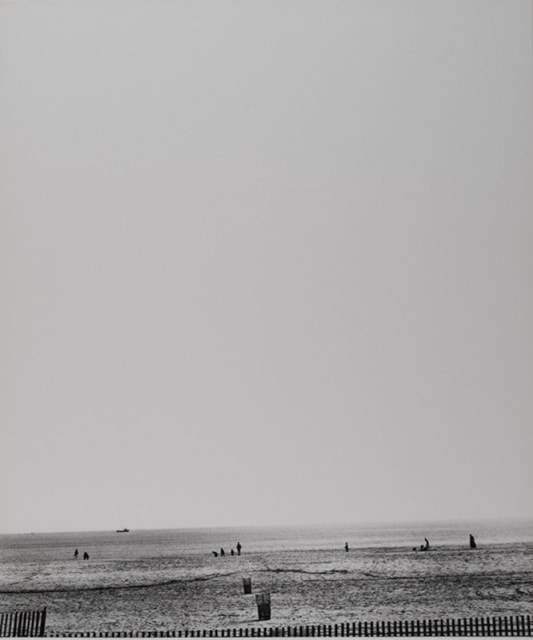(b. 1914, Moscow, Russia; d. 1986, USA)
Photographer Irene Fay was born in Moscow on the eve of the First World War. At three-years old, her mother fled the Bolsheviks with her and her infant brother, after they imprisoned Fay’s father for being a factory owner, capitalist, and Jew. They escaped to Crimea, hiding under hay at the bottom of a horse drawn caridge. From an early age, Fay witnessed heinous events that informed her visual aesthetic that delicately and quietly captures fleeting moments with curiosity and mystery.
Fay’s family finally reunited in Chemnitz, Germany. She finished high school in 1933, shortly after Hitler became Chancellor. Fay enrolled at the University of Dresden the following year when Nazism was on the rise. The photographer found many of her fellow students wearing SS regalia to class and repelled by their allegiance, left for Switzerland to study interior design at the Academy of Fine Arts in Zurich. There she met Polish engineering student, Stefan Feigenbaum, whom she later married.
In 1937, the couple moved to Warsaw where Fay began exploring photography. Over the following two years, she worked for the Polish Repertory Theater producing commissioned portraits of leading actors. She also created many privately commissioned portraits, including a portrait of the famous comedian, Adolf Dymsza.
The 1930s became increasingly dangerous for Jews in Poland. In August 1939, days before the Nazis entered Poland, Fay and Feigenbaum obtained visas for a trip to Switzerland, packing only evening clothes, pretending to be going on a short business trip. In her essay “The Years with Gotthard Schuh” Fay notes, "We arrived in Zurich with two small suitcases containing a ball-gown, tuxedo, some toilet articles, a long fur cape, and my jewelry (all of it).” They managed to convince officials they had been invited to a gala convention and their trip would last only a few days. Fay had sewn diamonds into the hem of her dress. The gems remained hidden until her death in 1986.
For the remainder of the war, the couple lived in Switzerland where Fay worked as a darkroom assistant for Switzerland's premier photojournalist, Gotthard Schuh. She learned aesthetics and darkroom techniques, and soon began an apprenticeship with notable Swiss photographer Hans Finsler with whom she learned the science and art of photographic chemistry. Her husband forged passports to help other Jews escape from Europe.
In June of 1945, Fay gave birth to their first child, Janine. By the end of the WWII, she was working in Zurich as an independent portrait photographer. Her subjects included prominent artists and writers, such as Friedrich Dürrenmatt, Herman Haller, and Felix Salten. In 1948, Fay emigrated to the United States which is also when the family changed their name from Feigenbaum. Fay gave birth to their second child, Ann, in 1951.
After becoming a citizen in 1954, she worked as a freelance photographer, focusing on portraits to help support her growing family. From 1937 to 1984, the photographer produced an estimated 3,000 privately commissioned studio portraits, half of which were created in her New York City studio. In 1973, Fay joined Witkin Gallery, the first successful commercial photography gallery in NYC. Lee Witkin represented the artist for ten years, followed by Marge Neikrug who represented her until Fay’s death in 1986. As a member of the famed New York Camera Club, Fay befriended André Kertész, Lisette Model, Evelyn Hofer, and Diane Arbus. Inscribed in her self-titled book, Lisette Model wrote “To Irene Fay, one of my favorite photographers.”
During her years in the United States, Fay created imagery for which she is best known: clothing draped over chairs or hanging eerily on clotheslines, mysterious exteriors, mannequins, and still lifes that study the effects of light and shadow. Recurrent themes in her artwork of hiding, refuge, and escape mirror those in her own life. A handwritten message to her grandchildren found in her art studio after her passing reads, “The diamonds are in the enlarger”–a generous clue for the family inheritance. Fay hid the diamonds that she and her husband smuggled out of Poland in August 1939 inside her photo enlarger.
Fay’s experiences informed a rich body of work that is as much autobiographical as it is reflective of common, yet precious moments captured in time. Her instinct to persevere over hardships launched an impulse to capture her photographic subjects in a mastery of the use of light, composition, and form through refined darkroom skills.
Fay’s work has been included in several group and solo exhibitions at institutions such as the Smithsonian Institution, Jersey City Museum, Hunt Institute for Botanical Documentation, Witkin Gallery, Neikrug Gallery, and Barry Singer Gallery. Fay is the author of the 1985 book Daybook from a Kitchen Drawer, that includes her photography alongside recipes and menus. Fay’s work is in the permanent collections of Schlesinger Library at Radcliffe Institute, Fenimore Art Museum, and New Jersey City University.

